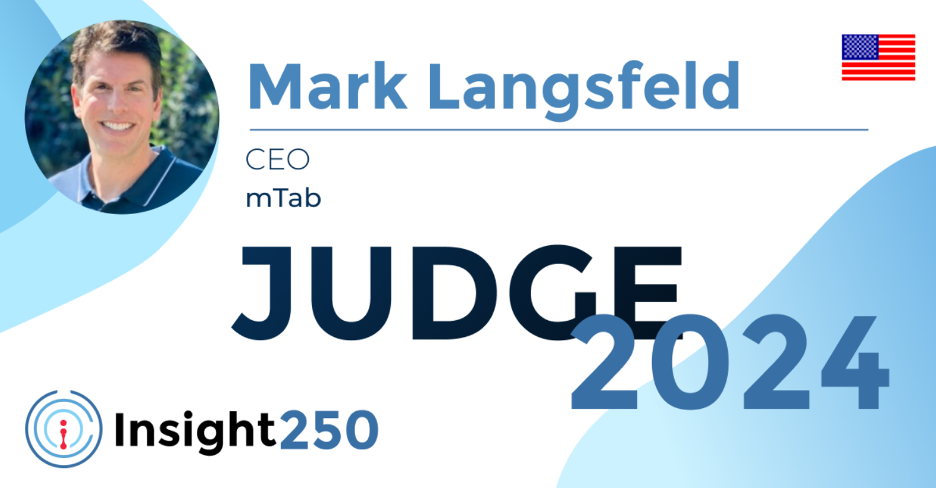The State of the Insights Industry
Insight250 recently commissioned a study of insight experts and innovators, asking them a series of questions about where they currently see the state of insights in terms of technology, personnel, expertise, and impact and where they predict it will go.

Article series
Insight250
- The importance of business sense in research
- The role of humour in effective leadership
- The importance of ethics
- The importance of disruption in innovation and leadership
- The importance of Disruption in Innovation and Leadership Part 2
- The importance of Diversity & Inclusion
- The impact of colour
- Communicating insight with impact
- Insights on leadership, culture and polling
- The evolution of electric vehicles
- 2022 Top tips (part 1)
- 2022 Top tips (part 2)
- Maximising the potential of data
- The importance of flexible working
- Winners
- The importance of advanced analytics
- Judges for the 2022 Insight250 Awards announced
- The evolution from social listening to digital intelligence
- The Judges' Perspective
- The judge's perspective - part 2
- Insight Climate Collective
- Insights technology
- Understanding employee ownership
- Global insight perspectives
- Top Tips from our Leaders and Innovators
- The Evolution of Insights in the Food & Beverage Market
- The Evolution of Insights in CPG
- Neural Mechanisms Behind Consumer Decision-Making
- Celebrating and Elevating the Insights Industry
- The State of the Insights Industry
- Opportunities, challenges and threats that AI presents
- 2024 Insight250 Winners Announcement
- Connecting Brands and Consumers Through Insights
- The Importance of Human Insight and Attention
- The Elevating Role of Insights with Technology Innovation
- Haleon’s Insight Expert on Consumer Healthcare
- Insight from the Insight250: How AI is Impacting Qualitative Research
- How AI Tech is Doing the ‘Heavy Lifting’ for Insights
- Reviewing the top tips for 2025
- Google's Sarah Ashley on AI and revolutionising insights - Insights from the Insight250
- Beyond BI: The Future of Decision Intelligence for Insight Professionals
- The Advancement & Impact of Insights - An Insight250 Winners Series perspective with David Smith
- International Jury for the 2025 Insight250 Awards Announced
- Newly elected President, Anne-Sophie, on Revolutionizing the Impact of Insights
- Haleon's Litthya Baez on Enhancing Healthcare with Insights - Insight250 Winners Series
- Understanding the Insights of Consumer Decisions
- Moving Beyond Dashboards to Deliver Decisions with AI
- How AI is Transforming Insights
- How AI is Transforming Insights
- Five Years of Insight250: Elevating the Insight Industry
Now in its fourth year, the Insight250 continues to expand its influence and impact on the world of insights. From the original annual awards, now among the most prestigious in the industry, to articles and interviews, the mission of the Insight250 continues to focus on celebrating and elevating the all too often unsung market research industry and its leaders, pioneers and innovators.
As part of this, Insight250 recently commissioned a study of insight experts and innovators asking them a series of questions on where they currently see the state of insights in terms of technology, personnel, expertise and impact, and where they predict it going. The Insight250 Perspectives: State of the Industry 2024 Survey also asked a series of questions around AI and the state of technology across the industry.
Experts widely lamented their technology capabilities with a just over quarter (26%) of respondents saying their current tools are highly effective in diagnosing consumer behavior with 44% feeling their research solutions are only somewhat effective
Respondents also emphasized the need for significant enhancements in current tools, as well as concerns about expanding solutions leading to fragmented data and analysis silos. While these issues aren't new, the need for resolution is increasingly urgent.
I sat down with Mark Langsfeld, Co-Chair of the Insight250 Judges and CEO of ResTech firm mTab, to discuss feedback, the findings of the report, and the current state of insights.
CB: Why do you think it makes sense for Insight250 to delve into industry surveys?
ML: “The Insight250 is in a unique position as a central point of the industry. With leaders and innovators from around the world, we think it makes perfect sense for us to tap into their expertise on issues and topics impacting insights worldwide. And discussing the state of the industry seems like an ideal starting point. We not only want to help connect these experts, but we want to help them learn from one another.”
CB: Only 26% of those surveyed said their current market research tools are effective in diagnosing consumer insights. What do you see is driving this?
MH: “Enterprises across industries have created ‘bolt-on’ solutions for decades that have continually added-on a variety of the latest tools and solutions. This has resulted in complex market research environments that are fragmented and not integrated. So ultimately it creates more work for analysts to sift through data, analyze the results, identify insights and deliver them in a format they organization can effectively use.
“Yet, this has also created a trust issue with the output, which can impact the credibility of market research teams. Getting to a centralized solution that aligns each step of the process from data to analysis to insights is a big step to building that reliability.”
CB: Why do you think the fragmented state of research tools continues to exist?
ML: “There are simply a lot of solution providers that have focused on addressing one or two steps of the process, so companies have been forced to piece-meal their enhancements over the years. This is already changing though since our Innovation Team at mTab has a number of our clients using our new Halo Insight Management System, or IMS. It’s a centralized hub for every research and insight need, accessible across the organization. Halo leverages cutting-edge AI to deliver real-time, actionable insights to a variety of teams.
“We have researchers, analysts, product managers, marketing directors, writers, engineers and producers using it. Anyone who needs to understand the "why" behind customer behavior to make smarter, faster decision-making.”
CB: The survey asked a lot about AI, with 62% of respondents expressing strong openness to adopting this new technology. Why do you make of this?
ML: “Well the other side of that discussion is that only about a third - 37% - of organizations have already integrated a level of AI into their operations, with another 15% planning to commence incorporation of it to some level. What is AI though? There are so many provider and applications that are out there that it’s confusing to identify the right AI solution for the ideal application in research.
“This is largely why we have integrated strategically measured AI into our Halo IMS so it can deliver appropriate efficiency and efficacy to market researchers in a manner they can completely control and trust."
CB: According to the survey, most insight professionals say they plan to maintain their current team sizes (53%) and budgets (62%) over the next 12 months, with a notable segment (32%) planning to moderately expand their teams to meet growing demands. What is your takeaway from this?
ML: “The value of insights continues to increase. We’re seeing this across our client portfolio in entertainment, automotive, food and beverage and others. As consumers become more savvy and complex, understanding their behaviors and preferences - and where to find them - are increasingly vital.
“So, while some insight teams are doing this with personnel, a lot of the leading teams are investing in technology to help their existing teams perform faster and more efficiently with the right technology.”
CB: Thanks Mark - lots to reflect on here and fascinating to see the views of the various leaders and innovators who took part in the survey. Clearly this is another useful way that Insight250 can help champion our profession and ensure we continue to lead and innovate.

Crispin Beale
Chairman at QuMind, CEO at Insight250, Senior Strategic Advisor at mTab, CEO at IDXCrispin Beale is a marketing, data and customer experience expert. Crispin spent over a decade on the Executive Management Board of Chime Communications as Group CEO of leading brands such as Opinion Leader, Brand Democracy, Facts International and Watermelon. Prior to this Crispin held senior marketing and insight roles at BT, Royal Mail Group and Dixons. Crispin originally qualified as a chartered accountant and moved into management consultancy with Coopers & Lybrand (PwC). Crispin has been a Board Director (and Chairman) of the MRS for nearly 20 years and UK ESOMAR Representative for c15 years. As well as being CEO of Insight250, Crispin is currently Worldwide CEO of Digital Communications Solution Agency, IDX. Crispin is also the Senior Strategic Advisor at mTab and the Chairman of QuMind and spent 4 years as Group President of Behaviorally where he was responsibile for the client & commercial teams globally. Crispin is a passionate advocate for blending human intelligence and technology to deliver innovation and leadership across organisations.
Article series
Insight250
- The importance of business sense in research
- The role of humour in effective leadership
- The importance of ethics
- The importance of disruption in innovation and leadership
- The importance of Disruption in Innovation and Leadership Part 2
- The importance of Diversity & Inclusion
- The impact of colour
- Communicating insight with impact
- Insights on leadership, culture and polling
- The evolution of electric vehicles
- 2022 Top tips (part 1)
- 2022 Top tips (part 2)
- Maximising the potential of data
- The importance of flexible working
- Winners
- The importance of advanced analytics
- Judges for the 2022 Insight250 Awards announced
- The evolution from social listening to digital intelligence
- The Judges' Perspective
- The judge's perspective - part 2
- Insight Climate Collective
- Insights technology
- Understanding employee ownership
- Global insight perspectives
- Top Tips from our Leaders and Innovators
- The Evolution of Insights in the Food & Beverage Market
- The Evolution of Insights in CPG
- Neural Mechanisms Behind Consumer Decision-Making
- Celebrating and Elevating the Insights Industry
- The State of the Insights Industry
- Opportunities, challenges and threats that AI presents
- 2024 Insight250 Winners Announcement
- Connecting Brands and Consumers Through Insights
- The Importance of Human Insight and Attention
- The Elevating Role of Insights with Technology Innovation
- Haleon’s Insight Expert on Consumer Healthcare
- Insight from the Insight250: How AI is Impacting Qualitative Research
- How AI Tech is Doing the ‘Heavy Lifting’ for Insights
- Reviewing the top tips for 2025
- Google's Sarah Ashley on AI and revolutionising insights - Insights from the Insight250
- Beyond BI: The Future of Decision Intelligence for Insight Professionals
- The Advancement & Impact of Insights - An Insight250 Winners Series perspective with David Smith
- International Jury for the 2025 Insight250 Awards Announced
- Newly elected President, Anne-Sophie, on Revolutionizing the Impact of Insights
- Haleon's Litthya Baez on Enhancing Healthcare with Insights - Insight250 Winners Series
- Understanding the Insights of Consumer Decisions
- Moving Beyond Dashboards to Deliver Decisions with AI
- How AI is Transforming Insights
- How AI is Transforming Insights
- Five Years of Insight250: Elevating the Insight Industry


